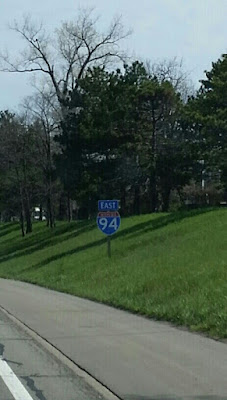Before I start this post of the day we drove over to the Cumberland Gap National Historical Park I want to mention the wild fire that is destroying areas of the Great Smoky Mountains National Park and the city of Gatlinburg which is surrounded on three sides by the national park. As of writing this there have been seven deaths and 14 injuries due to this fire. More then 150 homes and businesses have been destroyed displacing thousands of residence. Not to mention the surrounding timberlands that are gone due to the fire.
Tom and I pray for those injured and the families of those who have died and we also pray there is no more lose of life. May those fighting this fire stay safe.
It is sad to think about what is gone forever in this beautiful park and the surrounding areas but it is much sadder to hear of those who have died and been injured.
When we parked at the Raccoon Valley RV Park in Heiskell, TN our main purpose was to visit the Great Smoky Mountains National Park. Then we realized we were also a little over an hour away from the Cumberland Gap National Historical Park. So we decided to take a day and visit this park. (clicking on pictures should enlarge them for better viewing)

Mid-18th century explorers following well-worn bison and American Indian trails found their way through at Cumberland Gap. Their discovery opened the Ohio Valley to the first great wave of westward migration. Today at Cumberland Gap National Historical Park you can walk in the foot-steps of yesterday's travelers--men, women, and children propelled by dreams and determination.
The route through the gap was first brought to widespread attention by Dr. Thomas Walker, who had been hired to stake out an 800,000-acre grant beyond the Blue Ridge. In 1775 a long hunter named Daniel Boone was commissioned to blaze a road through the gap. Boone's trace evolved into the Wilderness Road, establishing his place in history as a frontiersman and pathfinder.
Though other routes were used, the Wilderness Road through the Cumberland Gap was the primary way to the west until 1810. In the years 1780 - 1810 between 200,000 and 300,000 people crossed the gap heading west. There was eastbound traffic as well: crops, corn whiskey, and herds of livestock.
With the nation that now spanned the continent, long-distance transportation quickly improved in the first half of the 1800's. Canals, railroads, and well-engineered wagon roads crossed the Applachians. Cumberland Gap declined in importance. Then during the Civil War both sides considered the gap strategic. By the end of the war the gap had changed hands several times, yet it saw no major action.
In the 20th century, Cumberland Gap (and its associated roadways) continued to be a major economic artery for the Appalachian region. When Cumberland Gap National Historical Park was authorized by Congress in 1940, U.S. 25E, a major paved highway, passed through the gap, compromising the historic scene known to Indians and early settlers. To restore the historic landscape the highway was rerouted through the Cumberland Gap Tunnel, which opened in 1996. Over the next years the gap area was restored to the way it looked around 1810. Today you can see and experience the natural beauty of Appalachian mountain country. (information taken from park brochure)
 |
Cumberland Gap Tunnel
Top: entering tunnel from Tennessee.
Middle: we are now under Virginia.
Bottom:coming out in the sunshine of Kentucky. |
We started our visit at the Visitor Center. Where we watched a movie about Daniel Boone and his association with the Cumberland Gap. While waiting for the movie to start we walked outside to this view from a deck area.
This cannon was also on the deck.
Leaving the visitor center we drove up to Pinnacle Overlook. From here we were able to view Kentucky, Tennessee, and Virginia.
 |
| Drive up to Pinnacle Overlook. |
 |
| Picnic area on road to overlook. Closer look at sign below. |
 |
| Our lunch view before we started up the path to the overlook. |
Views walking up the path to the overlook:
Views at the Pinnacle Overlook:
 |
| Could not leave without taking a selfie. Yes, it was windy. |
We drove down and over to the Daniel Boone area. There was nothing open there but we did see the displays below.
We then drove over to the Iron Furnace.
 |
| Water running under path to Iron Furnace |
Took these three pictures in Cumberland Gap,TN
We then stopped at a cute coffee shop for a cappuccino and a chocolate drink for Tom then headed back to the RV park. This was our last National Park during our 2015-2016 adventure. Actually, this was our last "sightseeing" stop. Two days later we pointed the truck north and started the trek back to Michigan.
"Stand at Cumberland Gap and watch the procession of civilization, marching single file--the buffalo
following the trail to the salt springs,
the Indian, the fur-trader and hunter, the cattleraiser,
the pioneer farmer--and the frontier has passed by."
~Frederick Jackson Turner, 1893









































































